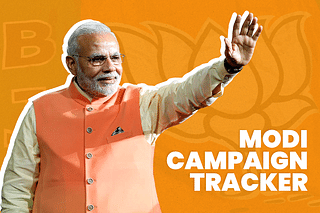World
What Kenya Gained By Going Cashless
Amiya Kane
Nov 28, 2016, 06:37 PM | Updated 06:37 PM IST
Save & read from anywhere!
Bookmark stories for easy access on any device or the Swarajya app.
Indian markets have recently been flooded with mobile-banking systems and applications, moving from a cash based economy to cashless transactions. The Indian population has found the change from cash to cashless rather a radical one, trying to make many transactions using mobile- wallets, debit/credit cards or banking services such as UPI.
In that a lesson or two can be learnt from Kenya, which has already achieved a full functioning cashless sector in the economy through the mobile payment system called M-PESA, in partnership with Vodafone’s local operator Safaricom.
This system has increased the level of productivity in the Kenyan economy. It has reduced the amount of time used in making multiple trips to the bank by simply giving the user options of transfering funds with a click of a button.
How does it work?
One has to simply sign up with M-PESA, where the system will open the user’s M-PESA account:
- Money can be credited into the account by approaching a local corner shop Safaricom agent who will then transfer money into the user’s account via the user’s mobile.
- Withdrawal of money is possible in a similar manner, where the user will go to the agent, sufficient balance will be checked and amount will be debited from the person’s account.
Services offered:
M-PESA was introduced as a developmental initiative for the purpose of microfinancing payments. As it observed a rise in popularity with over 21 million users as of the year 2016, it now provides services such as:
- Deposit and withdrawal of funds
- Transfer of money to users and non-users
- Payment of bills
- Gateway to loans
- Transfer money between services and bank accounts
- Purchasing Airtime
The system has also overcome loopholes by adding a cap of $500 which would prevent money-laundering and transfer of large amounts of money.
Cashless transactions have positively affected the household sector in Kenya which showed an increase of 5-30 per cent in income due to lessened travel time. The system has also financed multiple start-up businesses with business transfers achieved through mobile payments from buyer to seller smoothly. It has also integrated the traditionally un-banked population as over 80 per cent of the population use mobile phones as of 2016.
Cashless transactions have gained popularity in India, and with the increase in debit/credit card penetration in the economy along with a rise in mobile-payment systems, India too can hope and aim for similar benefits of going cashless.
Save & read from anywhere!
Bookmark stories for easy access on any device or the Swarajya app.
Introducing ElectionsHQ + 50 Ground Reports Project
The 2024 elections might seem easy to guess, but there are some important questions that shouldn't be missed.
Do freebies still sway voters? Do people prioritise infrastructure when voting? How will Punjab vote?
The answers to these questions provide great insights into where we, as a country, are headed in the years to come.
Swarajya is starting a project with an aim to do 50 solid ground stories and a smart commentary service on WhatsApp, a one-of-a-kind. We'd love your support during this election season.
Click below to contribute.





